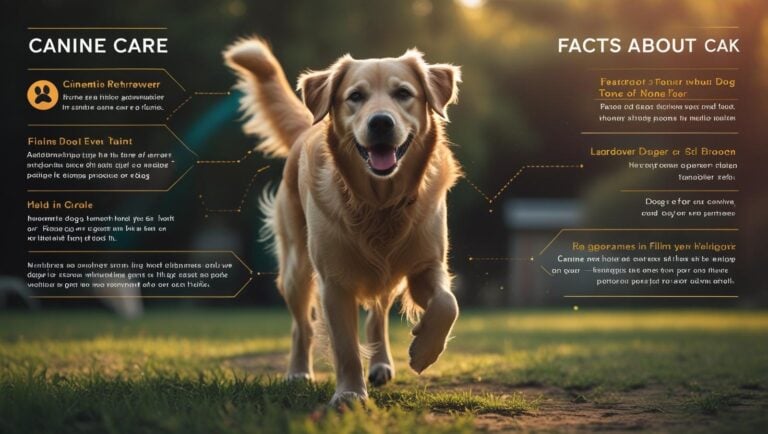Knowing how long your dog is likely to live is essential if you want to make the most of your time together. Every dog breed has a different average lifespan, and these differences can help you choose the right companion or plan for your pup’s future. Whether you’re looking to adopt or already have a four-legged friend, understanding breed lifespan helps you set expectations and give your dog the care they deserve.
In this post, you’ll find a clear breakdown of average lifespans by breed, why these numbers matter, and tips to help your dog enjoy more healthy years. Use this guide to make wise decisions and keep your canine happy, healthy, and by your side as long as possible.
What Impacts a Dog’s Lifespan?
Several factors shape how long your dog will share life by your side. While each breed has a baseline, a dog’s life expectancy isn’t set in stone. Genes, daily habits, and trips to the vet all have an effect. Understanding the big picture makes a real difference when you’re trying to help your dog reach a healthy old age.
Genetic Predispositions by Breed
Every breed has its own set of strengths and challenges, thanks to its genetic makeup. Some breeds face higher risks of certain diseases or conditions simply because of their DNA. For example:
- Large breeds like Great Danes and Bernese Mountain Dogs are more likely to develop heart disease and joint problems, which can shorten their lives.
- Small breeds, such as Chihuahuas and Dachshunds, often face dental issues but tend to live longer overall than larger breeds.
- Purebreds can be more prone to inherited conditions like hip dysplasia, epilepsy, or specific cancers because of limited genetic diversity compared to mixed breeds.
A dog’s genes act like a starting blueprint—they don’t decide everything, but they do set the stage. Responsible breeders work to lower the risk of severe health problems by screening parent dogs. Still, even with good breeding, some health issues are complex to avoid. Knowing what runs in your dog’s breed lets you keep a close eye on early warning signs.
Diet, Exercise, and Weight Management
What your dog eats and how much they move matter more than most people realize. Quality food gives dogs the building blocks for strong bodies and sharp minds. Junk food or too many treats can lead to unnecessary weight gain, which can shorten a dog’s lifespan by years. Obesity raises the risk of:
- Diabetes
- Joint and bone problems
- Heart disease
- Shorter overall life
Maintaining a dog’s healthy weight is not just about portion control; it’s also about understanding their nutritional needs. It’s about feeding the right kind of food for their breed, age, and size. Every dog needs daily movement, whether that’s walks, runs, games of fetch, or training sessions. This helps keep muscles strong, joints healthy, and minds engaged.
If you want your pup to stay around for more birthdays, keep these habits in mind:
- Choose high-quality food that meets your dog’s needs.
- Stick to a feeding schedule to avoid overfeeding.
- Make daily exercise a non-negotiable part of your routine.
- Monitor your dog’s body shape and adjust their food and activity as they age.
Veterinary Care and Preventive Health
Regular vet visits work like oil changes for your car—skip them, and trouble adds up before you know it. Preventive health care keeps your dog protected from threats you can’t see and problems you might not notice at home. This covers:
- Vaccinations: Shield dogs from dangerous diseases like parvovirus, distemper, and rabies.
- Routine check-ups: Catch silent problems such as dental disease or early signs of kidney issues.
- Parasite prevention: Guard against ticks, fleas, and worms that can sap energy and cause illness.
- Dental care: Bad teeth do more than smell; they can hurt a dog’s heart and organs over time.
Stay on top of appointments, and ask your vet about breed-specific concerns at every check-up. Early detection keeps options open and can add years to your dog’s life. Take dental care seriously—brushing teeth or using dental treats can help prevent pain and disease.
Consistent care, wise lifestyle choices, and a little knowledge go a long way toward helping your pup enjoy a whole, happy life.
Average Lifespans by Dog Breed Size
Breed size is one of the clearest indicators of how long a dog will likely live. Tiny pups often surprise us by sticking around for many years, while large or giant breeds live life at a faster pace and sadly don’t stick around as long. To see how a dog’s size stacks up against their expected years, here’s a breakdown of what to expect if you’re living with small, medium, large, or giant breeds.
Small Breed Lifespans
Small dogs tend to win the lifespan race. Many of these pint-sized companions live well into their teens, sometimes even longer. Their slower metabolism and lower risk for certain illnesses give them a real head start.
On average, small breeds live 12 to 16 years. Some tiny breeds are famous for outliving their larger cousins by many years. Here are a few standout examples:
- Chihuahuas typically live between 14 and 17 years, with some reaching 20.
- Dachshunds: It’s not uncommon to see these long-bodied friends live 12 to 16 years, especially if kept slim.
- Toy Poodles: Full of bounce and brains, these dogs often live 14 to 18 years.
Other small breeds, such as Yorkshire Terriers, Maltese, and Papillons, also exhibit strong longevity. With good food, plenty of play, and regular vet visits, it’s realistic to expect your little pup to share the better part of two decades with you.
Medium Breed Lifespans
Medium breeds land right in the middle when it comes to both size and lifespan. They generally live 10 to 13 years. While not as long-lived as smaller dogs, medium breeds still enjoy a good run with less risk for the joint issues and heart problems often seen in big breeds.
Some popular medium dog breeds and their average lifespans:
- Beagles: Well-loved for their energy and nose, Beagles live around 12 to 15 years.
- Cocker Spaniels: These gentle souls often reach 12 to 14 years, though some can live even longer.
- Bulldogs: Short-nosed breeds like Bulldogs often face more health challenges, which can keep their lifespan closer to 8 to 10 years.
Others, like Border Collies and Australian Shepherds, can live on the higher end of this range, especially with lots of exercise and quality care. If you’re looking for a dog with both sturdiness and a strong chance at a double-digit birthday, medium-sized breeds are a safe bet.
Large and Giant Breed Lifespans
The bigger the dog, the shorter the years together. Large and giant breed dogs tend to live fast and age quickly, usually averaging 7 to 10 years. Some giants, like the Great Dane, may only celebrate 6 to 8 birthdays.
Why don’t these majestic breeds live as long? Their bodies proliferate, which can stress their hearts, joints, and other organs. Here’s how a few well-known large breeds measure up:
- Golden Retrievers: As popular family members, they typically live 10 to 12 years, but may develop health issues that can shorten their lifespan.
- German Shepherds: These loyal protectors usually live 9 to 12 years with proper care.
- Great Danes: As gentle giants, they sadly have some of the shortest lifespans, often just 6 to 8 years.
Other big breeds, like Saint Bernards and Mastiffs, face a similar fate. Early health screening, lean diets, and avoiding rapid growth as puppies can sometimes help, but the realities of biology are tough to beat.
Understanding these average lifespans helps set expectations and encourages thoughtful planning, especially when choosing a new best friend or guiding your current pup into their senior years.
Comprehensive Dog Breed Lifespan Chart
Every dog parent wants to know how many good years they’ll get with their pup. While size points you in the right direction, looking at breed-by-breed numbers gives you the clearest picture. Not all Labs or Beagles live as long as the next, but averages can help you set honest hopes and plan your years together. The chart below puts exact numbers in one place, making your search for facts quick and straightforward.
Average Lifespans for Popular Dog Breeds
You’ll see each breed’s group, since herding dogs face different risks than lapdogs, and those differences show up in lifespan, too. Skim, compare, and look for your favorite breeds or ones you’re thinking about adding to your family. This approach makes it easier to decide what fits best—whether you want a running buddy for five years or a small friend you’ll watch grow old.
| Breed | Group | Average Lifespan |
| Chihuahua | Toy | 14-17 years |
| Dachshund | Hound | 12-16 years |
| Toy Poodle | Toy | 14-18 years |
| Yorkshire Terrier | Toy | 13-16 years |
| Maltese | Toy | 12-15 years |
| Papillon | Toy | 13-15 years |
| Shih Tzu | Toy | 12-16 years |
| Beagle | Hound | 12-15 years |
| Border Collie | Herding | 12-15 years |
| Cocker Spaniel | Sporting | 12-14 years |
| Australian Shepherd | Herding | 12-15 years |
| French Bulldog | Non-Sporting | 10-12 years |
| Bulldog (English) | Non-Sporting | 8-10 years |
| Labrador Retriever | Sporting | 10-12 years |
| Golden Retriever | Sporting | 10-12 years |
| German Shepherd | Herding | 9-12 years |
| Boxer | Working | 10-12 years |
| Siberian Husky | Working | 12-15 years |
| Great Dane | Working | 6-8 years |
| Saint Bernard | Working | 8-10 years |
| Bernese Mountain Dog | Working | 7-9 years |
| Rottweiler | Working | 9-10 years |
| Mastiff | Working | 6-10 years |
| Pomeranian | Toy | 13-16 years |
| Shiba Inu | Non-Sporting | 13-16 years |
| Boston Terrier | Non-Sporting | 11-15 years |
| Pug | Toy | 12-15 years |
| Cavalier King Charles Spaniel | Toy | 12-14 years |
Keep in mind, these numbers are averages—plenty of pups outlive their breed’s norm with great care, while others may face issues early. Genetics, diet, activity, and medical care still matter just as much as the breed itself.
A chart like this helps match expectations with reality, so you don’t have to guess how long your next furry family member might be by your side. Use this as a cheat sheet when comparing breeds or planning for your pup’s future. Your next step? Make those years count with plenty of love, good food, and lots of play.
Tips to Help Your Dog Live Longer
Every dog owner wants more years with their best friend. While genetics plays a role, what you do daily has a significant impact on your dog’s health and longevity. Small changes in your pup’s routine can work together to extend their happy, healthy years. Here’s how you can stack the odds in your favor and help your dog enjoy a longer life.
Choosing the Right Diet: Best nutrition practices and foods to avoid
What you put in your dog’s bowl matters from day one. Nutrition affects energy, weight, and even how well your dog fights disease. Start with food designed for your dog’s age, size, and breed. Look for real meat as the primary ingredient and avoid brands that are loaded with fillers or cheap byproducts.
Stick to these nutrition basics:
- Feed a balanced, high-quality diet with the right blend of protein, fat, and essential vitamins.
- Choose foods with clear labels and avoid artificial colors, sweeteners, or preservatives.
- Watch portion sizes. Overfeeding can lead to excessive weight gain, potentially shortening life spans and causing joint problems.
Certain foods are flat-out dangerous for dogs. Never let your dog eat:
- Chocolate
- Grapes and raisins
- Onions and garlic
- Xylitol (a sweetener found in gum)
- Cooked bones
If you are ever unsure about trying a new food, consult with your veterinarian first. Remember, small treats can add up quickly, so use them sparingly or opt for low-calorie options, such as apple slices or baby carrots.
Importance of Activity and Mental Stimulation: How regular exercise and mental engagement keep dogs healthier longer
Daily movement is like giving your dog’s whole body a tune-up. Walks, runs, and games aren’t just fun—they help manage weight, maintain healthy joints, and improve mood. Even senior dogs need some exercise, though routines may change with age.
Physical activity keeps those tails wagging, but don’t forget your dog’s brain. Boredom can lead to stress and, in some cases, even destructive habits. Mental stimulation sharpens the mind and can slow the aging process.
To mix up your dog’s routine:
- Offer interactive toys and puzzle feeders.
- Rotate favorite toys to keep things fresh.
- Practice obedience training or teach new tricks.
- Plan new walking routes or let your dog sniff and explore safely.
Dogs need both body and brain workouts. If you see them slowing down, try adjusting the type or length of activity but keep moving.
Routine Health Monitoring: At-home checks and signs to watch for to catch health issues early
Don’t wait for annual vet visits to spot problems. Simple health checks at home make a huge difference. Early detection gives you the best shot at dealing with issues before they get serious.
Here’s what to check regularly:
- Weight: Run your hands along your dog’s ribs and waist. Sudden changes can signal trouble.
- Teeth and gums: Look for red gums, tartar buildup, or bad breath.
- Eyes and ears: Check for redness, discharge, or foul odors, which may indicate infection.
- Skin and coat: Feel for lumps, bumps, or bald spots. Healthy skin should be smooth and odor-free.
- Mobility: Watch for limping, stiffness, or changes in how your dog gets up or lies down.
Pay attention to appetite, thirst, energy level, and behavior. If your dog starts hiding, acting grumpy, or seems off, call your vet. Trust your gut—you know your dog best.
Making these checks part of your weekly routine can catch issues long before they become serious. Small efforts add up to big rewards when it comes to your dog’s health.
Conclusion
Knowing how long you can expect your dog to live helps you make the most of every year together. Lifespan is influenced by genetics, size, daily habits, and care, but you can still tip the odds in your favor by making informed choices. The breed chart above gives you a straightforward way to compare and plan for your pup’s future.
Choosing a breed or caring for your current dog with this knowledge means fewer surprises and better long-term decisions. Every day is an opportunity to set your dog up for a longer, healthier life.
If you have questions about your breed’s lifespan or want care advice, explore the chart or leave a comment below. Thanks for reading, and here’s to extra happy years with your furry friend.







![Why Koala Fingerprints Look Just Like Ours [Curious Facts]](https://pawfectonline.com/wp-content/uploads/2025/08/Koala-Fingerprints-Look-Just-Like-Ours-768x434.jpg)





